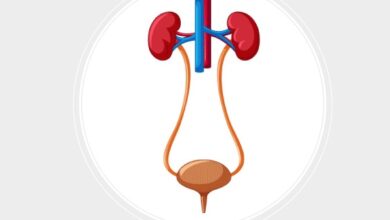Laughter therapy history techniques benefits
Laughter therapy is an alternative form of psychological therapy based on the use of laughter and humor to improve patients’ mood and alleviate symptoms of various mental disorders. Despite being a relatively unknown type of therapy, there is pretty solid evidence to support its effectiveness.
Humor has been used practically throughout history to improve people’s moods. However, laughter therapy is believed to have emerged in the 70s of the last century in the United States, when Norman Cousins published his experience overcoming the effects of arthritis using laughter as the main weapon.
From that moment, the use of humor in a therapeutic way began to gain more and more followers, and a multitude of specialists began to investigate its applications. Today, there are different forms of laughter therapy, based on all kinds of techniques aimed at improving the physical and mental health of patients.
Laughter therapy is still a relatively unknown practice, but in some countries like the United States or India it has achieved great recognition. In this article, we will see in detail what it consists of.
History
The idea that laughter can be beneficial for improving mood has been popular throughout history. However, until the second half of the 20th century, some researchers had the idea of using this natural medicine to improve our physical health as well.
One of the first scientists to take an interest in this topic was Dr. William Fry, professor of psychology at Stanford University, who in 1964 proposed the creation of a study group on the healing properties of laughter. Despite a lack of funds at the time due to the Vietnam War, Fry began investigating the matter on his own.
Still, the topic was relegated to the background until the 1970s, when Saturday Review editor Norman Cousins decided to tell his story. Since 1964, this writer has suffered from ankylosing spondylitis, a rare version of degenerative arthritis that is often fatal to anyone who suffers from it.
However, when Cousins told his story, his health only improved. His secret was this: the use of humor to improve his physical condition. According to him, 10 minutes of laughter a day helped him sleep better than morphine, the most powerful sedative drug in existence.
Due to the fame that his story achieved and his book Anatomy of a disease (1979), from this moment on, scientific experiments began on the power of laughter and humor to improve the health status of patients with different diseases .
In the decades that followed, many studies were carried out on laughter and its healing power, all from different perspectives. So today, fields as diverse as neuroscience, medicine, or clinical psychology have tried to apply the findings of laughter therapy, achieving surprising results for many.
What is laughter therapy based on?
The most important premise on which laughter therapy is based is this: laughter, regardless of whether it is caused by real or enforced reasons, has very beneficial effects on our physical and mental health. For this reason, this type of therapy seeks to promote humor as much as possible, and in the event that laughter is not achieved naturally, the patient is taught to imitate it.
Based on this idea, laughter therapy can take very different forms depending on the context.
types
Basically, we can find three different versions: the one based on true humor, the one focused on faking laughter as realistically as possible and the one that tries to create a safe space for the humor to appear naturally.
The first form of laughter therapy seeks to make patients laugh using classic humorous devices. Thus, in the sessions (which can be individual or in groups), participants can listen to comedy programs, act in humorous works or even watch movies or series that make them laugh out loud.
On the other hand, the second type of laughter therapy seeks to obtain the benefits of this natural phenomenon without having to use humor to do so. Also known as ‘laughter yoga’, in this type of therapy, patients are taught to mimic this event using different body and relaxation techniques.
Finally, laughter therapy can also involve using relaxation techniques and physical exercise, which combined with creating a safe space and using different types of speech therapy can help patients laugh more easily. during your day to day.
Laughter therapy exercises/activities
The most commonly used laughter therapy techniques are:
release the negative
This technique is performed using a balloon and there are several variants. The subject must inflate a balloon; when it’s done, he’ll release her, letting her disappear, and he’ll have to say something he wants to disappear from his life or environment.
eliminate the negative
In this case, the patient ties the balloon with the shoelaces. The therapist puts on music and the participants must start dancing by dragging the balloon, trying to make it explode before the music ends.
Tense to relax
In this technique, patients must contract the muscles and walk quickly, covering the room from end to end. Likewise, they should try to verbalize your name without loosening their muscles. Finally, the body gradually relaxes.
Sound laughter technique
Patients are lying on the floor and the therapist instructs exercises to induce different types of laughter directly.
tickle technique
Finally, while not possible in all cases, some therapists choose to induce laughter directly through tickling.
benefits
We all experience the most immediate benefits of laughter on our own skin: a greater sense of well-being, more positive emotions and, in general, greater joy. However, supporters of laughter therapy claim that the effects of this phenomenon go much further.
So, according to some research, deep laughter can often alleviate the symptoms of many serious mental illnesses such as depression, anxiety, or even schizophrenia. This would occur because, with laughter, a large number of endorphins and neurotransmitters are released, regulating brain activity.
On the other hand, it seems that laughter also has a very positive effect on our body. The effects of laughter therapy, in this sense, affect diseases of all kinds, from the most common to the much more serious ones.
Thus, continuous laughter includes benefits such as normalizing tension in people who suffer from it a lot, reducing all kinds of pain and discomfort, reducing the risk of suffering from diseases such as cancer or cardiovascular problems, or improving insomnia and others. physical problems related to stress.




